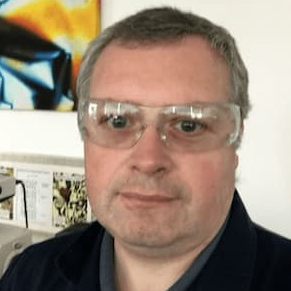Nematic Liquid Crystal
A special issue of Crystals (ISSN 2073-4352). This special issue belongs to the section "Liquid Crystals".
Deadline for manuscript submissions: closed (30 October 2023) | Viewed by 6649
Special Issue Editor
Interests: liquid crystals; ferroelectric; antiferroelectric; dichroic dye; smectic; nematic
Special Issues, Collections and Topics in MDPI journals
Special Issue Information
Dear Colleagues,
Nematic liquid crystals are the cornerstone of the liquid crystal display market, being used in twisted nematic, super-twist nematic, in-plane switching and vertically aligned devices, among others. There has always been a desire to improve the performance of the nematic liquid crystal to optimise its functionality and ensure it meets modern device requirements.
There has been a recent resurgence of interest in nematic liquid crystals with the emergence of novel phases with nematic order, and several of these have shown interesting electro-optical behaviour. These new phases include the nematic twist-bend phase and the splay nematic phase (ferroelectric nematic). This Special Issue celebrates these novel nematic phases and the pursuit of new and interesting behaviours that continue to keep the nematic phase at the forefront of leading-edge liquid crystal research.
Dr. Stephen J. Cowling
Guest Editor
Manuscript Submission Information
Manuscripts should be submitted online at www.mdpi.com by registering and logging in to this website. Once you are registered, click here to go to the submission form. Manuscripts can be submitted until the deadline. All submissions that pass pre-check are peer-reviewed. Accepted papers will be published continuously in the journal (as soon as accepted) and will be listed together on the special issue website. Research articles, review articles as well as short communications are invited. For planned papers, a title and short abstract (about 100 words) can be sent to the Editorial Office for announcement on this website.
Submitted manuscripts should not have been published previously, nor be under consideration for publication elsewhere (except conference proceedings papers). All manuscripts are thoroughly refereed through a single-blind peer-review process. A guide for authors and other relevant information for submission of manuscripts is available on the Instructions for Authors page. Crystals is an international peer-reviewed open access monthly journal published by MDPI.
Please visit the Instructions for Authors page before submitting a manuscript. The Article Processing Charge (APC) for publication in this open access journal is 2600 CHF (Swiss Francs). Submitted papers should be well formatted and use good English. Authors may use MDPI's English editing service prior to publication or during author revisions.
Keywords
- nematic;
- splay nematic;
- ferroelectric nematic;
- twist bend nematic;
- liquid crystal;
- bimesogen;
- dimer





